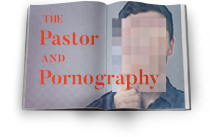Book Review: Diehard Sins, by Rush Witt
John Owen famously quipped, “Be killing sin, or it will be killing you.” In Diehard Sins, Rush Witt wants to arm believers with a double-barreled weapon of theological and practical counsel to help them launch grace-empowered attacks on the subtler sins that rarely register on their moral radars. In the same vain as Jerry Bridges’ Respectable Sins, Diehard Sins seeks to prescribe practical help for “the little, daily sins” that “eat up our lives from the inside out” (21).
As a pastor and a professionally trained biblical counselor, Witt brings his experiences to bear on this book, making it useful for both pastors and professional counselors.
SUMMARY
Diehard Sins is separated into three parts that spell out a plan of caring for others through counseling and discipleship (21).
Part 1 encourages Christians to joyfully enter the daily struggle with destructive daily habits. He helps readers understand four important truths: human effort is insufficient (ch. 1); “remaining sin” exists in every human heart (ch. 2); we need to believe “Jesus frees us to bring our sins into the light of his forgiveness” (ch. 3); and we ought to enter this fight with joy (ch. 4).
In Part 2, Witt calls us to “understand the role of thoughts, words, and actions in our daily quest to kill sin” (95), because sin tends to hide in these areas. The goal is to move believers from slavery to sonship (110) as we seek our identity in Christ. Witt also says prioritizes “guarding our beliefs” (128) because our actions reveal what we truly believe.
Part 3 argues that Christians need to bring Christ and his provisions to the fight. The gospel provides a rich treasury of spiritual resources to bear good fruit. He specifically addresses how God himself, the Bible, the gospel, the church, and the ordinances serve as powerful resources for growth in Christ (139).
FOUR REASONS IT’S WORTH YOUR TIME
1. It’s practical .
Witt’s book reads like an Ed Welch or Paul Tripp book. He begins each chapter with a single diagnostic snapshot of an individual’s specific, yet-to-be-detected sin followed by a chapter focused on treating that sin. Eliza is addicted to the rumor mill; Carl is slothful; Kristen is insensitive to others.
This creates anticipation for how the chapter will apply various aspects of the gospel to that particular sin. Furthermore, it draws readers in so that they might see themselves in these composite characters.
2. It’s theologically solid .
This book feels accessible but does not shy away from the significant doctrines of the faith like total depravity (89–90), providence (46), and positional and progressive sanctification (58–59). Witt excels at demonstrating both what the doctrine is and why it matters in the fight against sin.
For instance, he illustrates how our sovereign God even uses our sin to bring about good in our lives. After defining the doctrine of providence, he explains why it is important saying, “In a mysterious work of God’s providence, he uses trials, troubles, temptations, and even our diehard sin to stir a Godward dependence in us” (46). Every tributary of this book leads to Christ.
3. It’s gospel-centered .
Don’t be fooled by Witt’s three-step method; this book is thoroughly gospel-centered. Witt says, “Carrying divine authority and power, the good news of Jesus delivers transforming grace to those who may escape from the clutches of sin—not only from the flagrant forms of spiritual slavery like alcoholism, but from the less obvious forms as well” (112).
The whole book reflects this same confidence in the gospel. In fact, each chapter ends with a section called “Reflections for the Fight,” which lists questions that will point people toward Christ. Here are a few examples:
- “In Christ, grace abounds to you. How well do you know this?” (100)
- “How would you describe your identity in Christ?” (114)
- “Read 2 Peter 1:2–15. Notice how many times Peter emphasizes the importance of gospel reminders” (51).
4. The appendices are a gold mine.
You may be tempted to skip appendices, but don’t skip the ones in this book.
Appendix 1 provides a step-by-step guide for utilizing the provisions listed in Part 3, followed by a recommended reading list. This treasure trove of practical applications will assist any Christian in their fight against sin. This would also be a great resource for pastors, counselors, and other church leaders to provide others with their fight against sin.
ONE SMALL QUESTION
I don’t have any negatives, but I did leave with a small question. Why does Witt separate the provision of the church from the provision of the ordinances? This is small because I found Witt’s focus on the need for the local church refreshing, thoughtful, and thorough. Maybe he simply needed to divide the sections up because of his already robust treatment of the need for the local church in fighting sin. I simply would have listed the provision of the ordinances as a subset of the provision of the church.
CONCLUSION
I happily recommend this book. I plan on using it in my church, and I believe it will be a helpful resource for Christians seeking to fight sin.








